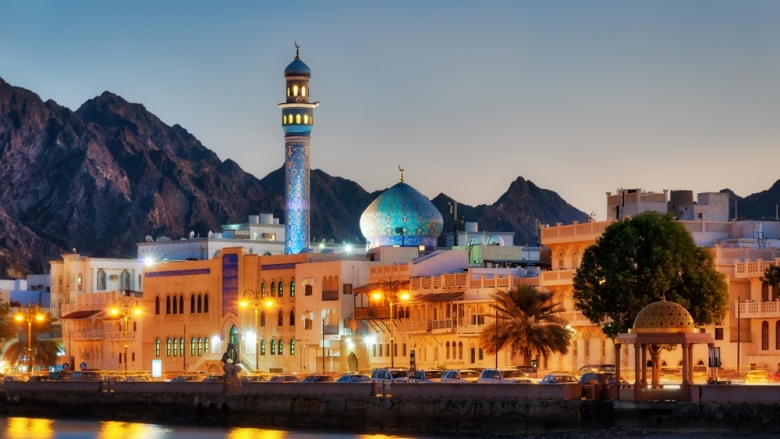Oman’s economy is expected to contract in 2020 due to the oil price slide and the COVID-19 public health response. An increase in gas output and infrastructure spending plans will help growth recover over 2021-22. Fiscal and external deficits will remain under strain due to low oil and gas prices. Rigid recurrent spending will keep public debt high, estimated to exceed 70% of GDP in 2020 and beyond. Real GDP growth is estimated to have decelerated to 0.5% in 2019, down from a recovery of 1.8% in 2018. This is largely driven by 1% (y/y) decline in oil production, capped by the since-lapsed OPEC+ production deal. The non-oil economy is estimated to have been subdued due to the slowdown in industrial activities and services sector. Inflationary pressures are estimated to remain muted at 0.1% in 2019, reflecting weak domestic demand and tame food and housing prices.
Low oil prices and the spread of COVID-19 are the key challenges that Oman will need to navigate in the short-run. With oil prices in the mid-$30s in 2020 and constrained oil demand, growth is expected to contract by 3.5%. Forty five percent of Omani exports (or 21.7% of GDP), mostly oil, go to China, the highest Chinese exposure among GCC. Low oil prices will create challenges to the implementation of supportive public spending for the country with already high deficits, more limited buffers and an elevated debt level. As such, the fiscal deficit is expected to markedly widen to over 17% of GDP in 2020, before starting to slightly narrow down over 2021-2022, assuming more favorable oil prices.
Key downside risks are reflected in further erosion of the fiscal balance, through far lower oil prices, exposure to China, and economic disruption to tourism due to COVID-19. Mitigation would be demonstrated by implementation of substantial fiscal measures to curtail the government deficits, a new push on privatization, and prioritizing capital projects. With its accumulated external debt, Oman will need a rapid normalization of emerging market funding conditions to finance the continued deterioration of the country's fiscal and external accounts. Significant new gas production in 2021 along with diversifying the economy in sectors such as manufacturing, tourism and fishing will support the growth momentum and lessen the risks. At the same time, enabling Petroleum Development Oman (PDO) to maintain or increase its oil and gas production has sizable investment needs. The pressure for job creation, resulting from the low employment rate of young Omanis, is a risk to public finances and the social situation.
